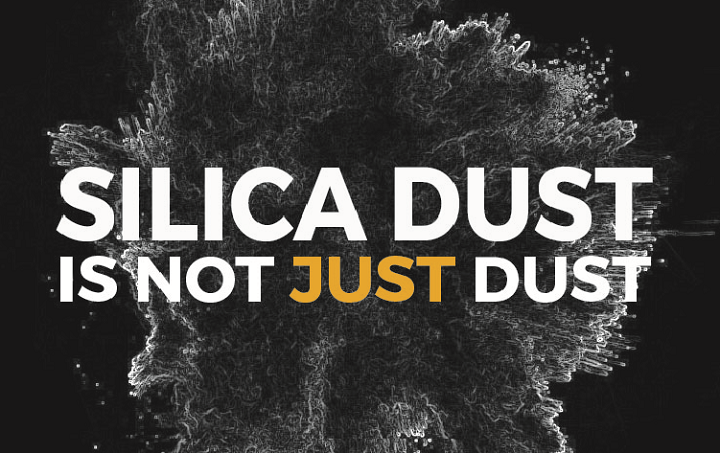OSHA Respirable Silica Standard
Crystalline silica is a material that is commonly found in concrete, stone, artificial stone, sand and a variety of other materials. Whenever these materials are cut, ground or drilled workers expose their lungs to the very dangerous, small silica dust particles. These particles are called “respirable” particles. Exposure to respirable particles (silica dust) can cause silicosis, which is an incurable, and in some cases, deadly lung disease.
Overexposure to respirable silica has been linked to:
- Silicosis
- Lung Cancer
- Chronic Obstructive Pulmonary Disease (COPD)
- Kidney Disease
OSHA estimates that around 2.3 million workers are exposed to silica at work each year. The new silica regulation (OSHA regulation 29 CFR 1926.1153) officially went into effect September 23, 2017 for the Construction Industry (where most silica exposure occurs) and June 23, 2018 for General Industry & Maritime.
OSHA is highly focused on the enforcement of this new regulation and found 117 violations across construction sites in the first six months of rule enforcement. OSHA estimates that employers will pay up to $1 BILLION A YEAR to meet compliance with this standard.
This new rule establishes a Permissible Exposure Limit (PEL) for workers at 50 micrograms per cubic meter (μg/m3) of air over the course of an eight-hour day, which is called an eight-hour time-weighted average (TWA). According to OSHA, this amount of exposure still poses a significant risk, but it is the lowest level that can be reasonably achieved through engineering controls. A few examples of these engineering controls are listed below:
- Using water while grinding to limit airborne dust
- Using a dust shroud when possible
- A properly sized dust collector with 99% air filtration
- Correct housekeeping procedures (use a HEPA-filtered vacuum to remove worksite dust instead of a broom or air compressor)
When these types of engineering controls are not enough to reduce worker exposure to crystalline silica, then respiratory protection must be provided. Respirators must comply with the requirements of the silica standard and with OSHA’s Respiratory Protection standard (29 CFR 1910.134).
Silica exposure can be measured by referencing objective data or directly monitoring actual employee exposure, which uses an air sampling device placed in the work environment. Some of the new ventilation standards set by OSHA include:
Dust Extractors Must:
- Be equipped with commercially-available shroud
- Have filter-cleaning mechanism
- Have at least 99% efficiency with HEPA filter
Application Based Specifications:
- HEPA required for hole-cleaning applications
- 25 CFM per inch of wheel for all grinding applications
Water Connection Specifications Must:
- Have integrated water delivery system on tool
- Continuously feed water to point of contact
Click FREQUENTLY ASKED QUESTIONS to read and learn more about the Respirable Crystalline Silica rule.
For more information on how SMART Safety can help ensure that your company is in compliance with all OSHA standards visit our OSHA Compliance Page.








